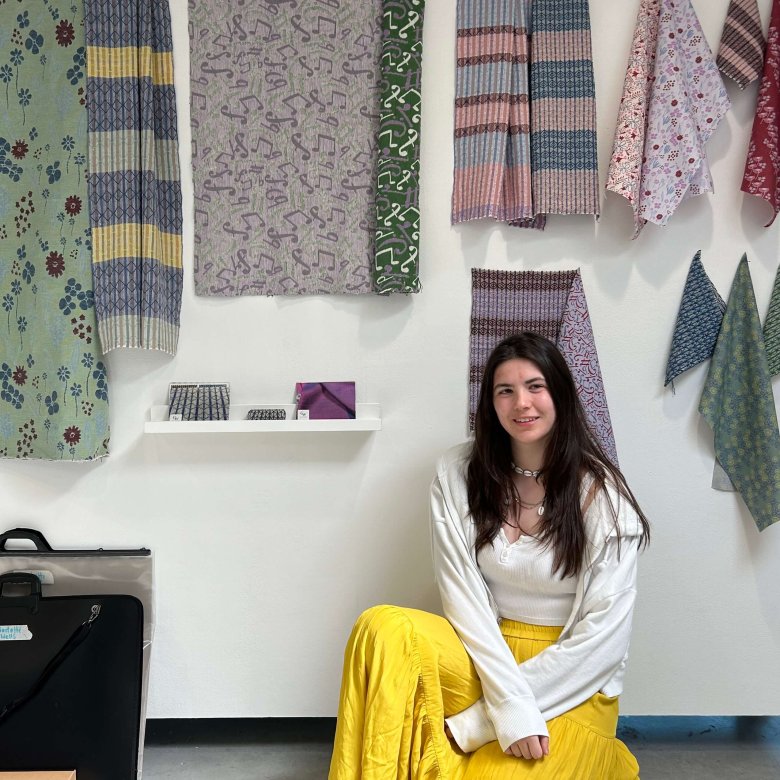Textiles graduand secures job at historic silk mill
24 June 2024

Textile Design BA graduand Charlotte Wells will become a Mill Assistant at Whitchurch Silk Mill - the UK’s oldest working silk mill, still producing to this day - after graduating this summer.
Charlotte specialised in weaving over the course of her degree and is looking forward to starting the job in Hampshire in July.
Charlotte completed a six-week work placement at the mill last summer, and jumped at the opportunity when a Mill Assistant role opened up. Whitchurch Silk Mill fell into disrepair in the mid-80s before being reopened in 1990 as a working museum. It aims to ensure the survival of winding and weaving using traditional machinery and methods.
On how she became interested in textile design, Charlotte says: “After completing GCSE Textiles and A-Level Art Textiles, I realised that I had found a creative outlet. I’ve always been a creative person and textile design allowed me to explore image through stitch and the elements of design that I enjoyed.”
"My journey to study this at degree level came after completing an Art & Design Foundation degree at Arts University Bournemouth. This allowed me to explore lots of different artistic disciplines and techniques, but ultimately, I chose textiles over set design which was my other option. The foundation cemented what I enjoyed most and where I felt my strengths lay.”
The inspiration for Charlotte’s pieces often comes from her environment. “I have done projects based on my home life, coastal views, my hobbies, and work inspired by placements. I like to focus on structures and patterns in my hand-woven designs, which is my passion. More recently, I have started using more imagery in my work due to my latest project and I’m looking forward to exploring that further.”
“My final year project focused on the climate crisis, and I hope to create more work that draws attention to environmental issues. There was also an emphasis in the project to communicate messages clearly, allowing the observer to easily understand what I had depicted,” says Charlotte.
“The most valuable thing I got from the course, beyond learning how to weave, was learning the end-to-end process from spinning to finishing. I also attended the Making it in Textiles Conference in 2023, which gave me a wider sense of what’s possible.”
Reflecting on her studies, Charlotte says: “The course definitely prepared me well for a career in textiles. I have been taught a trade, undergone a lot of personal growth, and now have a deep understanding of both the creative and technical sides of weaving. This knowledge also extends more broadly to textile design and has given me the best chance of getting work placements and jobs in the textiles industry.”
“My new job will be supporting weaver tacklers (weaving supervisors) that are using looms dating back to the 1890s, whilst also interacting with customers and providing production tours. I’m most looking forward to interacting with visitors and sharing the weaving process with them,” says Charlotte. “In doing this, I hope to pass on methods, skills, traditions, and knowledge that have existed at the mill since 1815 to the next generation.”





